Log on using the default username webui and password cisco
What’s difference between uplink and access on Cisco switch
Situation: When configuring a new Cisco 9200 Switch, there are options to select Uplink and Access. The client would like to know which one he should selelct.
A1: Uplink is usually referred to as a trunk port. This sort of link is used for connecting another Ethernet switch. Technically, this port is preferred to be equipped with higher bandwidth than the access ports on the same (1G port on a 100mbps switch). This consideration is to avoid bottlenecks. The trunk port carries – tagged (vlan tags) or untagged (native or without any tags) or both sort of frames.
A2: Uplink is usually a connection from one network device to another. It may be a switch to a router, or a router to a router, or a switch to a switch. Uplink means usually going to the services that your users need access to, e.g. access switches uplinks are distribution switches and the core devices are the uplinks of the distribution. Different distribution for different functions like a server farm, internet edge, wan edge.
A3: Usually an uplink port connects to another switch, while an access port connects to a host.
In some switches, such as some of the Nexus 9000 range, there are 4-6 40G ports, and 48 10G ports. In this case, the 40G ports are designated as uplink ports, and the rest are edge ports.
A4: There is absolutely no technical difference between an access and uplink port. These definitions are conventional. They signify the functional characteristic of the port, not technical. You can configure physical ports as either access or uplink. Some switches have a small number of higher-bandwidth ports that are usually used as uplink ports. For example, a 100Meg switch might have 2-4 1Gig ports, that are normally used for uplink function. But you can as well configure them as access ports. The higher bandwidth ports are used as uplink ones because they have to carry aggregated traffic from access ports and hence will likely to require more bandwidth. But again, they are technically no different from any other port on the switch.
How to Deploy Office 2019 using ODT
Situation: When the client downloads Excel 2019 from Microsoft License Center, it downloads Office Deployment Tool (ODT) instead of the Excel setup exe. It says Microsoft recommends using ODT to install Excel 2019. here post shows how to Deploy Excel 2019 using ODT
Step 1: Download the Office Deployment Tool from the Microsoft Download Center
The Office Deployment Tool is a free download from the Microsoft Download Center.
After you download the Office Deployment Tool, double-click on the officedeploymenttool executable (.exe) file to extract the ODT files. Now, you should have several files: setup.exe and some sample configuration.xml files. For an Office 2019-specific sample, see Sample configuration.xml file to use with the Office Deployment Tool.


The setup.exe file is the ODT and is a command-line tool that supports downloading and installing Office 2019. The configuration.xml files are sample files to get you started. You use the configuration.xml file to provide settings for the ODT to use when downloading or installing Office 2019. The configuration.xml is a simple xml file that can be created and edited in any text editor, such as Notepad. You can name the file anything that you want, as long as it retains the xml file extension.
Step 2: Create or Edit the configuration.xml
You can create multiple configuration.xml files to be used with the ODT. For example, you would create a configuration.xml file to download and install the 64-bit version of Office Professional Plus 2019 in English and a different configuration.xml file to install the 32-bit version of Visio Professional 2019 in French. When you run the ODT from an elevated command prompt, you specify which configuration.xml file to use.
Sample configuration.xml file to use with the Office Deployment Tool

This is edited xml file to Excel 2019 Volume license.

STEP 3: DOWNLOAD AND INSTALL LEXCEL 2019
To download the Office 2019 installation files, run this command:
setup /download configuration.xml
To install it, run this command:
setup /configure configuration.xml


How to create team channel in Microsoft Teams
1. Login Microsoft Teams.
2. Click on Teams icon.

3. High light on a team you want to add more channel. Click on Create more channels.
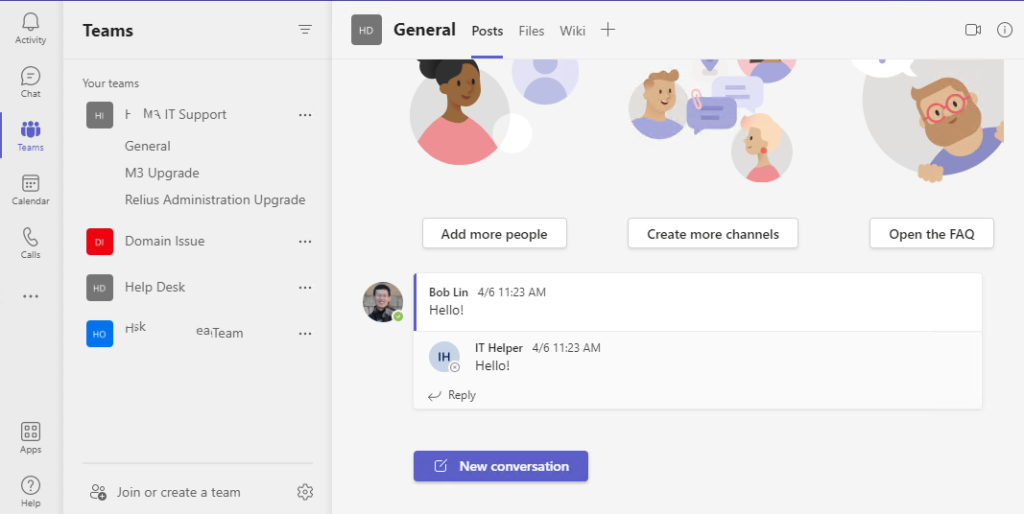
or click on 3 dots and then select Add channel.

4. Enter the channel name, description, and select Privacy.

5. Click on Add and you should have the channel under the Team.

Please watch Youtube video:
How to Create an Organization-Wide Teams in Microsoft Teams
With an Organization-Wide Teams, you can perform 3 main tasks: Communicate with all employees in your organization, store files, and schedule meetings. You must be a Global administrator to create company-wide teams. Here is how.
1. Login Microsoft Teams.
2. Click on Teams icon.

3. Click on Join or create a team in the button
4. Click on Create a team.

5. You may have many options to create a Team such as From scratch, From a group or team, Manage a Project, Manage an Event, Onboard Employees, Adopt Office 365, Organize Help Desk, Incident Response, Crisis Commnications, Manage a Store. Bank Branch, Patient Care, Hospital, Quality and Safety, Retail for Managers, Manage Volunteers, Frontline Collaboration. We will create Team from another team in our example.

6. Click Team or Microsoft 365 group.

7. Enter the suggested team name and description in the field provided.

8. Click on the ‘Privacy’ drop-down and pick ‘Org-wide – Everyone in your organization will be automatically added’.

9. Choose ‘Creat’. You have now created a company-wide team.
10. You can now add a welcome message to the entire team.

When your employees enter this team, they will see this message.

Use the ‘Files’ tab to add documents for everyone to see.
Use the ‘Open in SharePoint’ tab to see the rest of the site in SharePoint.
Click on ‘Add cloud storage’ to add more sites to the team.
The ‘Wiki’ tab is for adding notes and sharing other company-related information.
Click on the ‘+’ icon to add more relevant apps to the team.
How to create an email distribution group on Office 365
This article shows how to create a distribution group including two or more external email addresses on Microsoft 365.
Step 1: Step 1: Create members’ email addresses
- Login Microsoft 365 admin center.
- Navigate to Exchange.
- Click on Contact and then Add a mail contact.

4. Enter the contact information.

5. Click Next in Set up mail contact information (Option).

6. Review mail contact and then click Create.

7. Click Done!
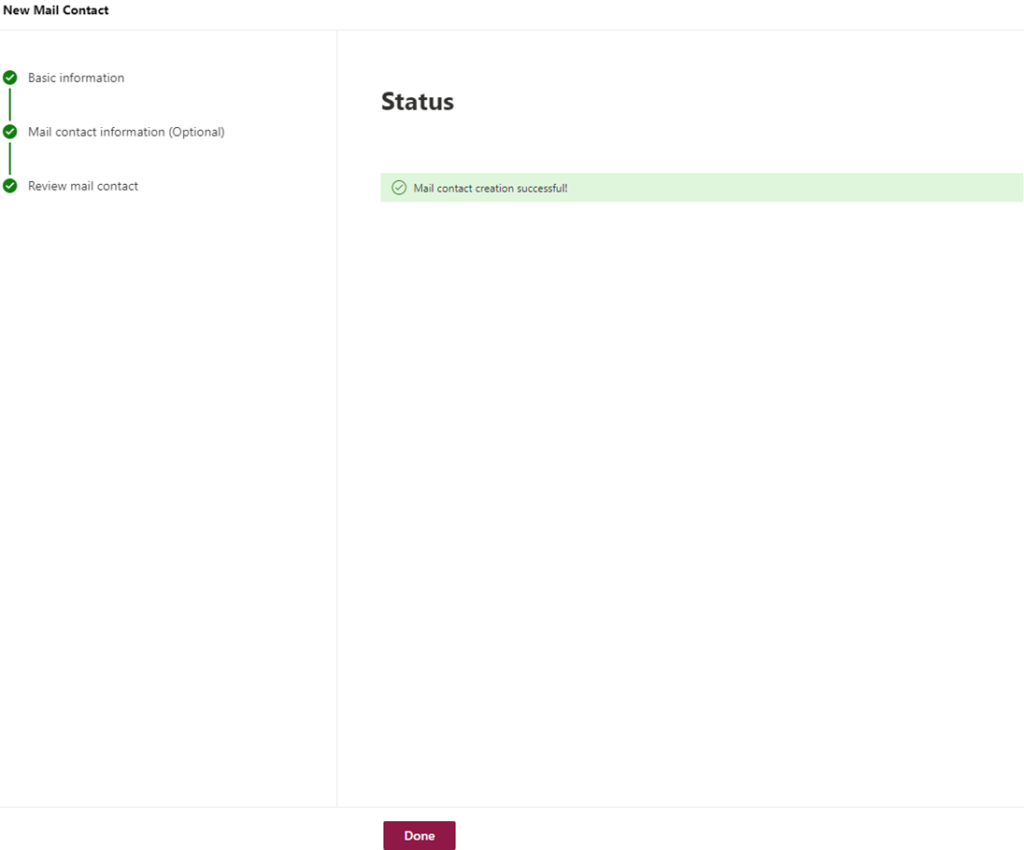
Step 2: Create a distribution group
- Click on Group and then Distribution. Click on Add a group.

2. Check Distribution and then Next.
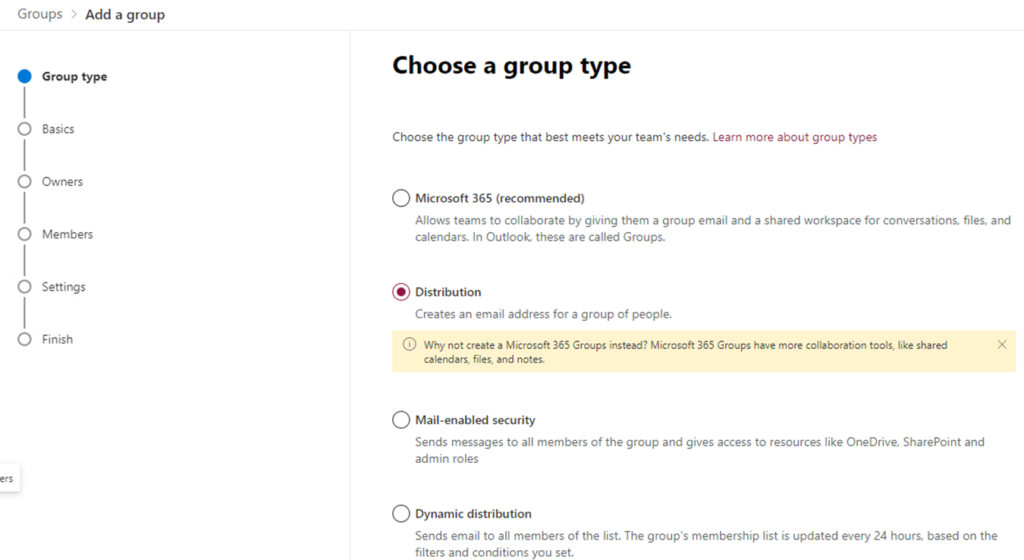
3. In Set up the basics, enter the group name and perhaps Description.

4. Click Assign owner.
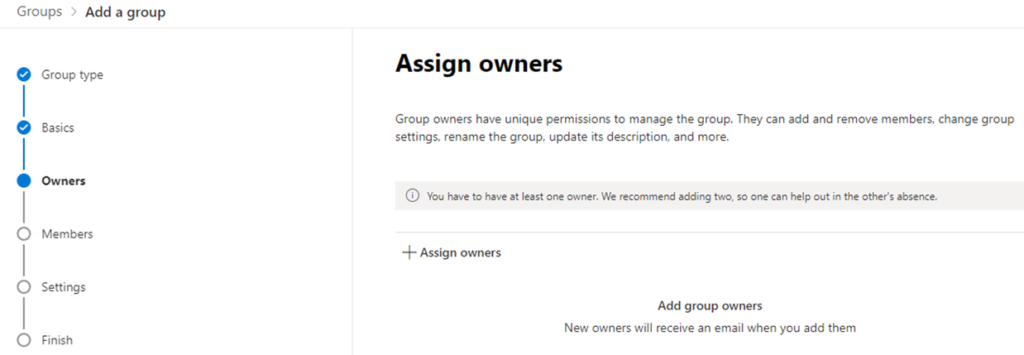
5. Normally, I will assign the creator as the owner.

6. Click Add members

7. In Edit settings, check Allow people outside of my organization to send email to this Distribution group and keep other settings as default.

8. Review and finish adding group by click on Create group.

Please review this YouTube video:
How to configure Cisco 9200 Switch using Classic Day 0 Wizard
After installing a new Cisco 9200 switch, you may use Cisco DNA Center Cloud Onboarding Day 0 Wizard or Classic Day 0 Wizard to configure it. The Web User Interface (Web UI) is an embedded GUI-based device-management tool to simplify device deployment and manageability, and to enhance the user experience. We can use WebUI to build configurations, monitor, and troubleshoot the device without having CLI expertise. This article is showing you how to configure Cisco 9200 Switch using Classic Day 0 Wizard.
Step 1: Connecting to the Switch by Setting up the DHCP Client Identifier on the client to get the IP address from the switch
- find your computer IP address by running ipconfig /all command.
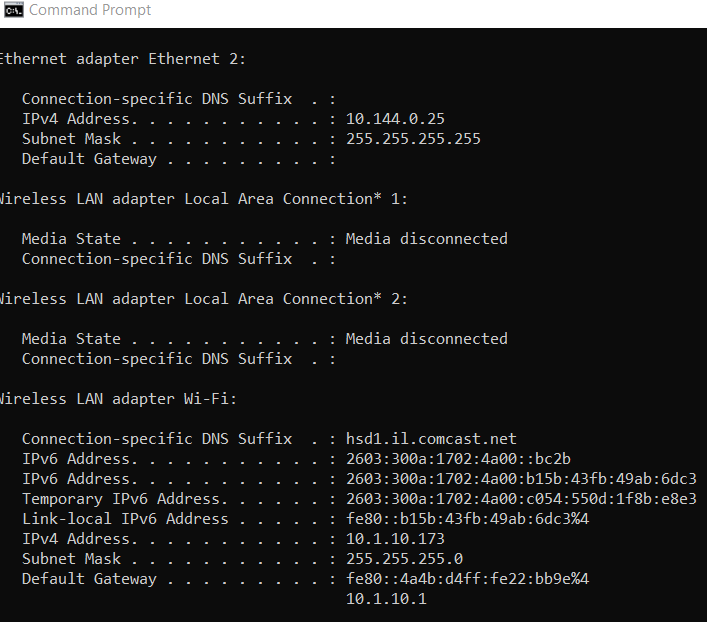
2. Run Registry editor by typing regedit in the Windows search box and press enter.
3. If prompted by User Account Control, click Yes to open the Registry Editor.
4. Navigate to Computer\HKEY_LOCAL_MACHINE\SYSTEM\CurrentControlSet\Services\Tcpip\Parameters\Interfaces\
5. Locate the Ethernet Interface Global Unique Identifier (GUID). in our example Ethernet 2 and IP 10.144.0.25. Note: don’t use 10.1.10.173 because it is WiFi IP address.
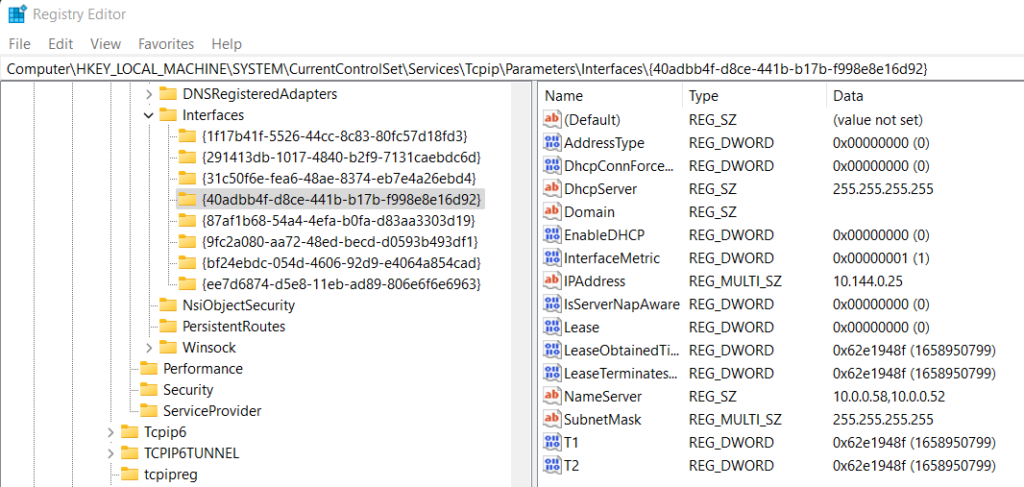
6. Add a new REG_BINARY by right clicking on new > Binary Value.
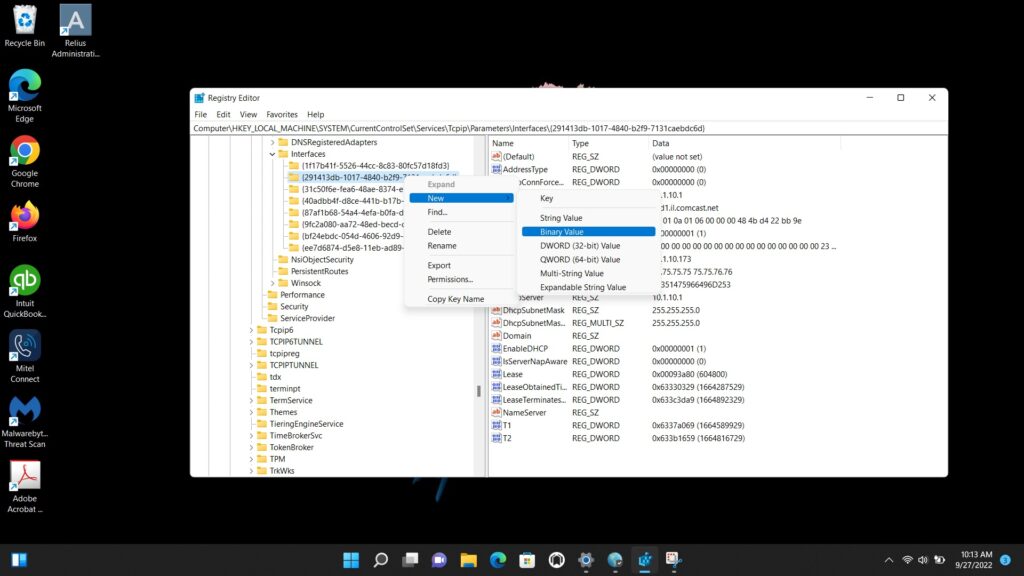
7. Type DhcpClientIdentifier with Data 77 65 62 75 69 for webui.
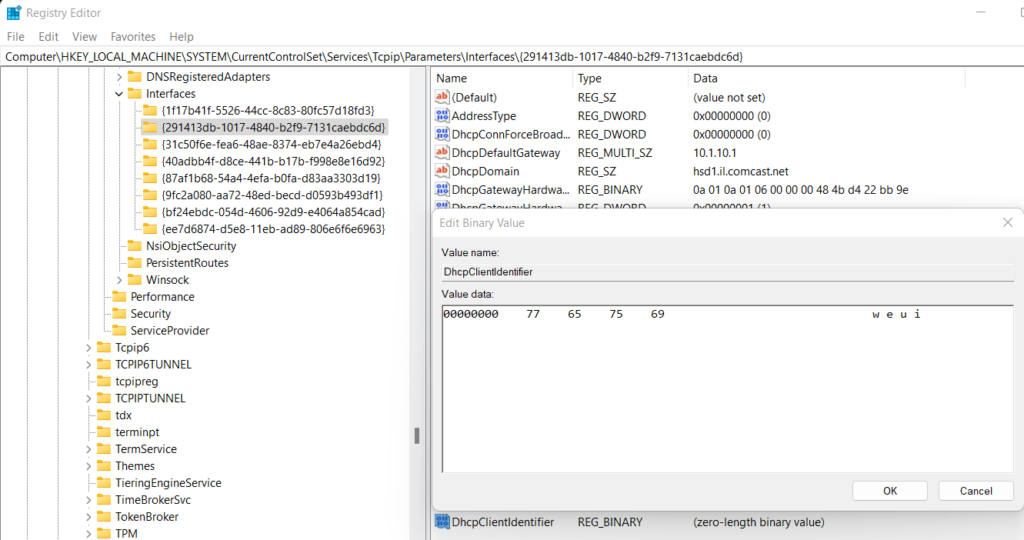
8. it shows like that.
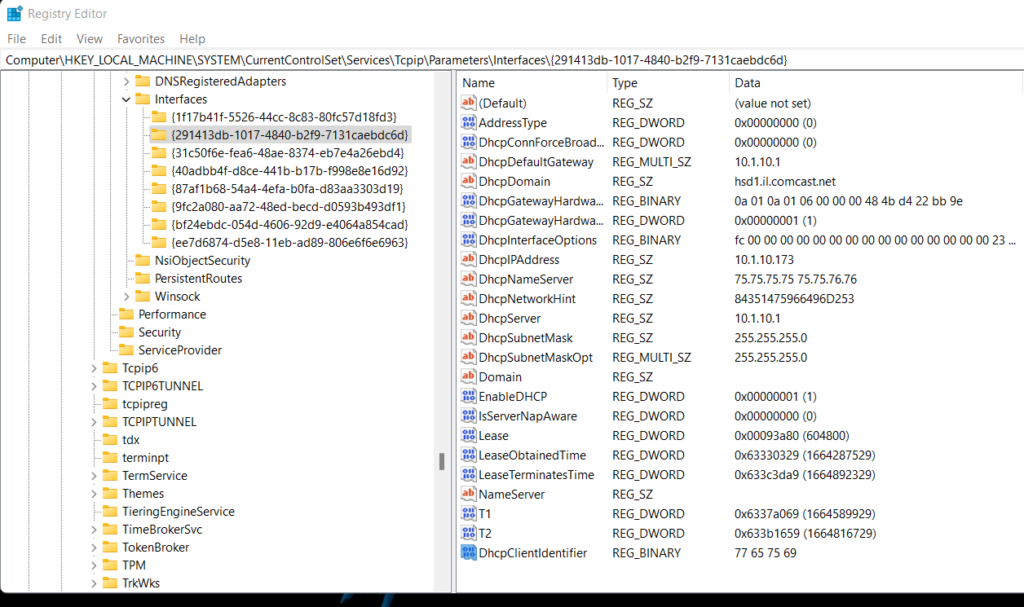
Step 2: Connect to Switch using WebUI
- Make sure that no devices are connected to the switch.
- Connect one end of an ethernet cable to one of the downlink (non-management) ports on the active supervisor and the
other end of the ethernet cable to the host (PC/MAC). - Set up your PC/MAC as a DHCP client, to obtain the IP address of the switch automatically. You should get an IP address
within the 192.168.1.x/24 range. - Launch a web browser on the PC and enter the device IP address (https://192.168.1.1) in the address bar.
- Enter the Day 0 username webui and password cisco.
How to add an email to allow list in Microsoft 365
Situation: A good email sent to you may go to Junk / Spam folder or go to quarantine. This article will show you how to add an email address to allow list in Microsoft 365.
Resolution 1: Add an email address or domain to allow list in Spam Policy
Resolution 2: Add an email address to allow list in Phish Policy
Resolution 3: Add sender’s server IP address to Connection filter policy
Resolution 4: Add recipients to the Safe Senders List
Resolution 1: Add an email address to allow list in Spam Policy
1. Login Office 365 admin and go to Microsoft 365 admin center
2. Click on Security

3. Click on Policies and rules

4. Click on Threat policies

5. Click on Anti-spam under Policies

6. Double click on the Anti-spam policy you want to whitelist, Anti-spam inbound policies (Default) in our example.

7. Find the Allowed and blocked senders and domains, Click on Edit allowed and blocked senders and domains.

8. Click on Manage senders or Allow domains under Allowed.

9. Click on Add senders to add senders’ email address.

Note: If it is the domain, enter the domain name only, for example

10. Click Done and then Save to save the settings.

Resolution 2: Add an email address to allow list in Phish Policy
1. Repeat above 1 to 4 steps.
2. Click on Anti-phishing

3. Double click on the Anti-Phishing policy you want to edit.

4. Click on Edit users, groups, and domains under the Anti-phishing policy.

5. Enter the user emails, groups or domains.

6. Click on Save and the close.

Resolution 3: Add sender’s server IP address to Connection filter policy
Note: this resolution need to know sender email server IP address. You may find this information from email header or sender DNS management tool.
1. Repeat 1 to 5 steps in resolution 1.
2. Double click on the Connection filter policy.

3. Add the IP address which is the sender’s server IP address.
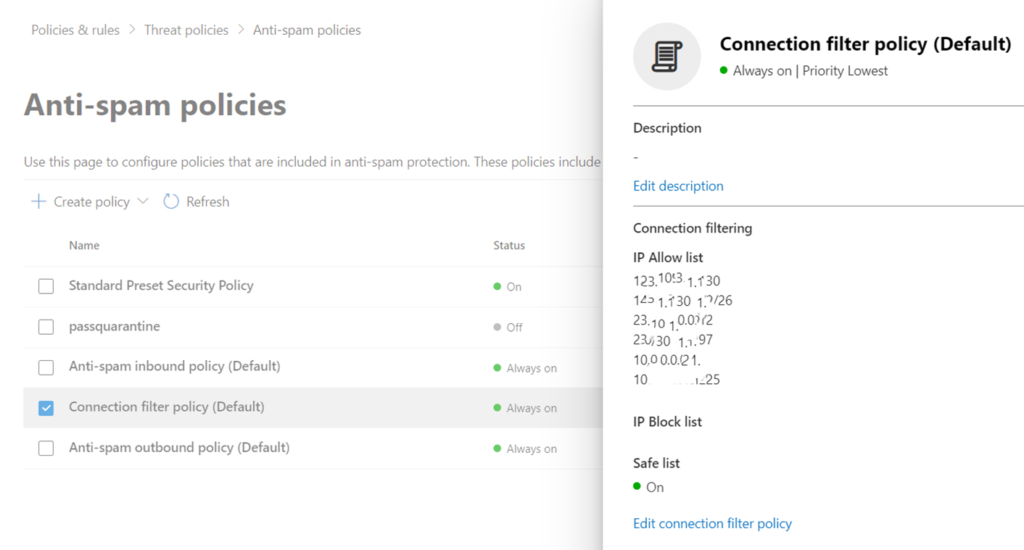
4. Close to save the settings.
Resolution 4: Add recipients to the Safe Senders List
1. On the Home tab, click Junk, and then click Junk E-mail Options.

2. On the Safe Senders tab, check the Also trust email from Contacts and Automatically add people I e-mail to the Safe Senders List box.

3. Click OK to save the settings.
Please view this Youtube video
Where or how to show Local Administrator passwords in LAPS
You may have multiple ways to find Microsoft Local Administrator passwords in LAPS.
- Check Attribute Editor by going to Properties of the user account. Navigate to ms-Mcs-AdmPwd.

2. Use PowerShell command Get-AdmPwdPassword -ComputerName
For individual computer,
Get-AdmPwdPassword -ComputerName hostname

For all hosts,
Get-AdmPwdPassword -ComputerName *

What’s Veeam Backup hardware requirement?
for the Veeam hardware requirements, please refer to this article :-http://helpcenter.veeam.com/backup/80/vsphere/system_requirements.html
Backup Repository Server
| Specification | Requirement |
| Hardware | CPU: x86 processor (x86-64 recommended).Memory: 4 GB RAM plus 2 GB RAM (32-bit OS) or 4 GB RAM (64-bit OS) for each concurrent job. Using more memory improves data processing performance for long chains of large backup files on backup repositories running 64-bit OS.Disk space: 200 MB for Veeam Backup & Replication components and sufficient disk space to store backup files and replicas (high-RPM drives and RAID10 configuration recommended).Network: 1 Gbps LAN for onsite backup and replication and 1 Mbps WAN for offsite backup and replication recommended. High latency and reasonably unstable WAN links are supported. |
Based on our experience, for Windows server with 5 or more VMs, it is better to have at least 16GB RAM for the physical server self.
Some people also ask how to calculate virtual memory needed to compact backup. “
From this perspective I think If repository has 16GB RAM, virtual memory is increased during the compact job up to 48GB. If compact job is still not finished, OS is unable to increase the virtual memory and task is failed with the error “Unable to allocate memory for storage metadata bank”.
The obvious workaround for this problem – assigning more RAM or manual configure virtual memory limits. But the question I have – how large should be virtual memory to compact 20TB of data? I wound experiment with size because such job takes days. So if someone has experience or know how I can calculate virtual memory needed for such task, would be great.”
A1: I don’t have a specific formula, but I had the same errors when doing a compact with multiple jobs with 2-3 TB files each. I went from 16 GB to 32 GB and all of those went away. Now that I’m doing Copy Jobs as well, I just increased to 48 GB and it still got into the 90% used range. More is better.
A2: Such memory consumption doesn’t look expected, indeed. The process performing compact requires ~150 bytes per block, which even with the smallest block possible (256 KB) gives 12 GB of RAM for 20 TB backup file. What block size is used for this job? I also recommend opening a case with our technical support for a closer investigation.